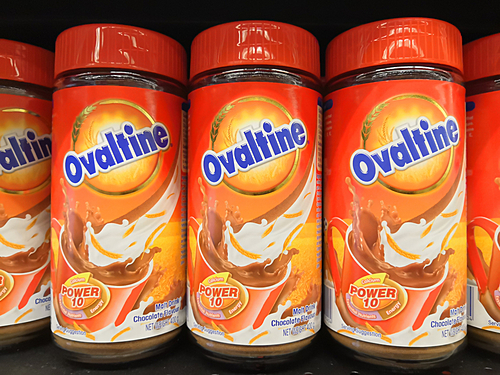Creating or constructing a *”Topical Map”* is a common question that many people have. Understanding how to accurately organize and visualize topics within the correct context can be quite challenging.
In this post, I’ll try to break down each concept or step into small, actionable chunks that will greatly help you when you start creating your own topical map.
A Topical map is not a list of keywords, it is not a list of topics; or also it is not a list of concepts either. So, if Koray clearly states that none of these methods fall under the correct definition of a “Topical Map,”.
So, what exactly is a “Topical map?” How can you understand this precise process or concept? And most importantly, how can you apply this “Topical Authority” framework to your projects or websites?
To find the answers to these questions, let’s start by defining what exactly a topical map is.
Table of Contents
What Is A Topical Map? Let Me Try To Make It Easy For You
A topical map is a process of structuring website content around a central entity by connecting related topics and subtopics while checking their relevance and proximity. According to Koray, a topical map is a merging of users’ search language with the natural language that we use in our daily lives. It’s a communication strategy with search engines to decrease the risk and cost of retrieval while increasing relevance and responsiveness.
Creating a topical map involves analyzing users’ search activities or behaviors related to the central entity and gathering & organizing topics based on ontologies and taxonomies, ensuring semantic and lexical semantic connections between them. When you start creating a Topical Map, it’s important to understand first how search engine construct their indexes between topics and entities. This is crucial, as Search engine may try to merge different topics and entities together, Therefore, you should structure your content to reflect those relationships, making it easier for search engines to understand and for users to find what they’re looking for.
Fundamentals and Core Concepts of Creating a Topical Map
- Source context
- Central entity*
- Central search intent*
- Core section*
- Outer section*
- Topical coverage & Topical borders*
Even if you’re already familiar with these concepts, understanding how to identify topics according to Koray’s methodologies and effectively include them in your topical map can be challenging. So, let’s break down each of these concepts into smaller pieces for better understanding.
1. What is a Source context?
Source context refers to the primary purpose or objective of the source, such as a website or brand. It unifies who you are, how you make money, and your brand identity. In simple words, your source context explains why you are trying to rank for a particular topic and the reason behind appearing in SERPs (Search Engine Results Pages). Read it again for better understanding:
* Who are you? How do you make money? What’s your monetization method?
* What’s your brand’s identity? What social media platforms do you use? Who is your CEO?
It’s really important to understand these points because the source you choose will significantly affect your ranking. Selecting the right source before processing a topic is crucial. When you start processing the topic, you should reflect your unique angle or perspective within the entire topical map and semantic content network according to your chosen source.
Secondly, establishing a connection between query networks and web sources ensures alignment with your business model. This alignment guarantees that your target audience receives a consistent and relevant message from you that resonates effectively. Your consistency can lead to increased engagement, trust, and conversions, ultimately strengthening your authority and credibility within your industry. Having a clear source context also differentiates your brand from competitors, providing a unique value proposition that enhances your overall brand identity and authority in your industry.
*If you’re still confused, check out the example below:*
For example, if your source context is *a mountain bike manufacturer*, you will target a query network focusing on production, frame materials (e.g., aluminum, carbon fiber), material types (e.g., lightweight, durable), quality aspects (e.g., build quality, finish quality), bike geometry, suspension technology, and customization options. However, if you choose this source context, you wouldn’t delve into mountain biking sport topics such as the rules and regulations of the UCI, Red Bull Rampage, or any other series because the association and semantic closeness between you and the sport rules are weak. In this case, you need to create a logical contextual bridge between your business and the specific entity you’ve chosen for a topical map.
2. What Is The Central Entity in A Topical Map?
**A central entity **is the primary focus, main topic, or main subject that appears in a topical map site-wide, whether in a core section or an outer section of the topical map. Google refers to this as the primary focus of the website. If you don’t know what an entity is, understand that entities can be people, places, organizations, events, animals, products, trees, and even abstract concepts. Your central entity defines for search engines what the website is mainly about, including topics that appear site-wide and topics that appear segment-wide.
When you start constructing your topical map, try to choose one main entity, topic, subject, or industry, and avoid covering multiple topics, subjects, or industries.
This is where the real magic happens. When we start building a topical map, we don’t include random entities, we do not open random pages, and we also do not target multiple topics at the same time.
Why? Because if we open five different topics and try to rank for all of them, we compete with five different authoritative websites for five different topics. As a result, we end up competing against 25 top authoritative websites for these five topics. That’s why, in the topical authority framework, we choose one main topic to process with every possible detail according to our source context. This approach decreases competition and focuses our efforts on one target.
The second most important thing is to align all of your semantic content networks with your central entity. This alignment helps search engines understand the topicality of the website. Based on this topicality, your site will be clustered with other knowledge domains of the same type.
3. What Is a Central Search Intent? And What Role Does Central Search Intent Play in Topic Finding for a Topical Map?
The central search intent is the purpose or aim that users have when they enter a query into a search bar. It unifies the source context with the central entity. Once you start creating a topical map, your central search intent and the central entity act as the backbone of the map. To define a central search intent for a topic, you should connect your central entity and source context together, which will then establish the central search intent. Additionally, identifying the central search intent involves focusing on the augmentation of predicates/verbs and their combinations with nouns.
Topics that we have under the topical map, whether in the core section or outer section, directly come from the central entity and source context, along with the central search intent. Understanding how central search intent helps define topical map topics is a crucial step, and you need to learn or understand this concept early on.
When building a topical map, we first identify the monetary purpose, such as who we are and why we are trying to rank for that topic. Then, we decide on the main entity or topic according to certain rules. Once that step is completed, we analyze users’ perspectives, behaviors, and search activities to understand what they are looking for when they seek information about that topic. Are they looking to buy, learn, visit, explore, compare, choose, select, or simply know more about the topic? What kinds of intentions do they have?
After gathering all these intents, we connect them and finalize the most common and central intent for us. Based on that intent, we finalize topics for both the core and outer sections to satisfy users with every possible and related piece of information they are looking for regarding our main topic.
For better understanding, consider the example below:
Example 1: Mountain Bikes Reviews website
Source context: Mountain Bikes and Gear Reviews
Central entity: Mountain Bikes
Central search intent: Looking for / Choosing Mountain Bikes
For the mountain bikes and gear reviews site, the main intents of users might include engaging in mountain biking, learning about bikes, choosing the right bike, looking for gear, exploring outdoor trails, improving biking skills, adventuring, and growing in the sport. Users might seek information on nearby trails, tracks, parks, shops, and other relevant details. They could also be trying to choose bikes, helmets, protective gear, bike components, and other related items. By identifying these intents, the central search intent for the mountain bikes and gear reviews site was determined to be “looking for/choosing mountain bikes.” This ensures the site provides comprehensive information to help users make informed decisions about mountain biking.
To optimize an entire website, ensure that title tags, H1 tags, heading structures, individual paragraphs, images, and alt tags consistently reflect relevant predicates, nouns, and adjectives.
4. What is The Core Section Of A Topical Map?
The core section of a topical map is where all the internal links, PageRank, ranking signals, and authority flow directly. This section unifies the source context with the central search intent. In the core section of a Topical Map, we deeply process both the main and minor attributes of the central entity, focusing on the monetization aspect. This involves analyzing both major and minor attributes of the central entity that originate from the source context, as well as entity-attribute pairs related to our services, products, or anything we want to sell.
The best way to define topics for the core section is to connect your central entity with your source context, helping you identify the core topics to include. By incorporating relevant attributes of our central entity—whether they are prominent or popular, based on semantic similarities and closeness—we ensure comprehensive coverage of the main topic.
5. What is The Outer Section Of A Topical Map?
The outer section of a topical map is to *improve overall historical data **by gaining more trust from search engine and enhancing users’ click satisfaction. This section focuses **on one specific entity and its prominent and popular attributes* to increase the overall topical relevance and contextual consolidation of the web source for the selected entity.
Attributes that are processed in the outer section of the topical map are *broader topics similar to a hypernym of a class*, not directly connected to the central entity.
In this section, we do not delve deeply into each attribute, in simple words, our outer section is flat, and it always flows all the PageRank signals to the core section. . For example, if the central entity is “digital marketing,” the outer section might include topics like “content creation” and “social media strategies.” The outer sections of the *map can expand* as necessary while maintaining logical connections to the core section.
6 Topical Coverage and Topical Borders
Topical coverage and topical borders are two main concepts that help determine the topics and the borders between them. There are certain rules to consider when finalizing the topics, which are explained below.
6.1 What is Topical Coverage in Semantic SEO Topical MAP?
Topical coverage in semantic SEO is determined by a complete, comprehensive, and structured process of organizing information on a web document, tailored around users’ possible and related search activities. In simple terms, it involves processing an entity with every attribute for any potential connection, ensuring all factual relevance is covered for higher relevance and responsiveness.
Topical coverage includes all related topics and subtopics within a specific contextual connection and knowledge domain, encompassing all related entities and attributes with accurate verbalization in a web content network.
The process includes:
- Covering the graph of topics related to the central entity.
- Processing an entity with every attribute for any potential connection.
- Ensure all factual relevance is covered for higher relevance and responsiveness.
- Including all related topics and subtopics within a specific contextual connection and knowledge domain.
- Accurate verbalization in the web content network.
Topical Coverage = Topics X Contexts
Topical coverage ensures that all aspects of a topic are comprehensively addressed, making the content highly relevant and responsive to users’ search intents.
What Koray Says About Topical Coverage:
- Topical coverage is not measured by the number of web pages or mentions of entities.
- If you didn’t define X, you didn’t cover it.
- If you didn’t connect X to Y, you didn’t cover it.
- If you didn’t match the macro-context of the web document to the query context, you didn’t cover the entity inside the query with the proper context.
- If your definition misses certain types of aspects, you didn’t cover it.
To become a topical authority in your niche, field, or market, ensure you comprehensively cover topics according to your source context. You don’t need to open a new page for every entity. Merging related and relevant entities can often be more effective, especially if they don’t generate significant traffic individually. However, if certain entities attract high traffic and user queries, process them on a single page.
Second Method
To further enhance your topical coverage, analyze your competitors’ topical maps. Start by examining how well they cover the topic, including their authority and relevance. Read their content and evaluate its quality. Observe their information structure, coverage depth, and content relevance.
Identify gaps in their coverage by analyzing their internal links, which show how well they connect relevant topics within their site. Scraping their XML sitemaps will also help you understand their content structure. Use named entity recognition techniques to pinpoint key entities and attributes your competitors target, identifying areas they may have missed or not covered extensively.
Finally, improve your topical map by filling these gaps, enhancing content quality, and ensuring comprehensive coverage. This approach will make your content more relevant and reduce the cost for search engines to process, analyze, index, and rank your content.”
The main changes include minor punctuation adjustments and ensuring consistent capitalization. The overall structure and content remain the same.
6.2 What are Topical Borders in Semantic SEO Topical MAP?
Determining where to put topical borders and how deeply to delve into a topic to achieve topical authority is a significant challenge. Many of us struggle with this because, according to Koray’s methodologies, opening a page for every topic and asking questions for every entity won’t provide higher topical coverage. So, if we don’t open pages, how do we achieve topical coverage, and how do we decide where to set topical borders? What kind of topics should we choose, and what types of entities do we need to process for higher topical coverage?
You may already know the answer to these questions, but let me explain it again. There are two major concepts, or steps, that shape our topical map: 1. source context; 2. central search intent.
The source context defines who we are and why we want to explore a chosen topic. Once selected, we need to determine how we will approach processing the topic and align it with our source context. For instance, two different professionals working on the same topic will have different approaches. Consider an engineer and a doctor both examining the same issue. The engineer might focus on technical aspects, using industry-specific terminology, while the doctor might explain the topic using simpler terms relevant to health and medicine. Their source contexts shape their perspectives, leading them to emphasize areas most relevant to their fields without delving into the same details in the same way.
Central search intent refers to the primary goal or need of the user group interested in the topic we want to process. Different users have different intentions, and based on these intents, we identify the main and central search intent that encompasses all of them. Essentially, we determine the hypernym intent of these users and then process the topic according to that intent.
But how do central search intent and source context help define topical borders?
According to our source context, we decide our topic processing angle. This means we focus on aspects that align with our expertise and perspective. According to our central search intent, we prioritize topics for the topical map by focusing on the primary goals and needs of our user group. We don’t just select relevant topics; we choose topics that align with our users’ intent. This intent guides us in setting boundaries for our topics, ensuring that our approach is tailored to meet the specific needs and interests of our audience. By combining these two concepts, we can effectively define topical borders and achieve higher topical coverage without the need to open a page for every possible topic.
You can also read : How Digital Marketing is Useful for Small Businesses?







